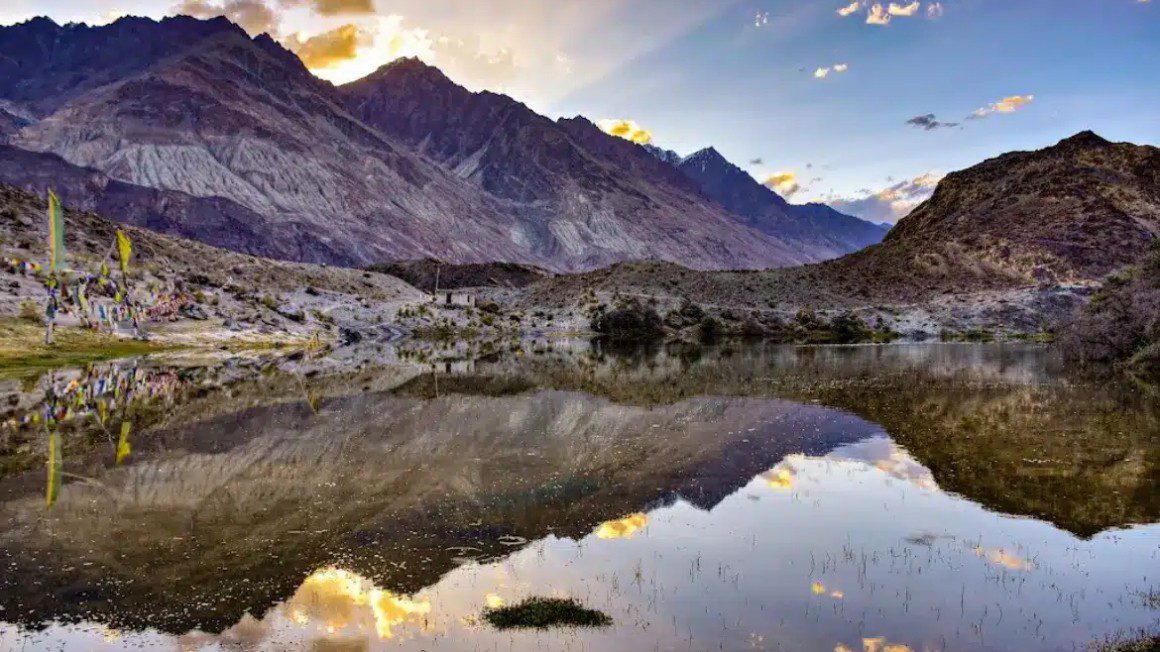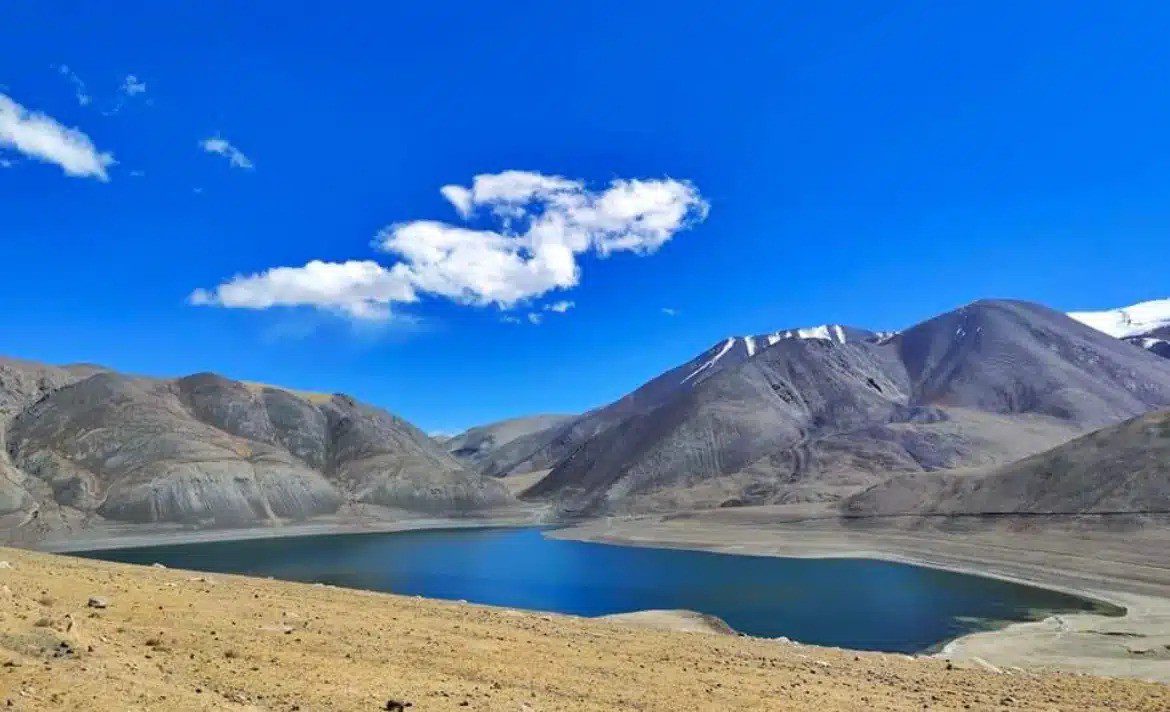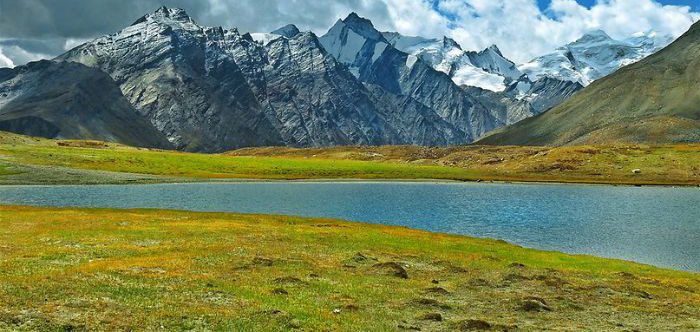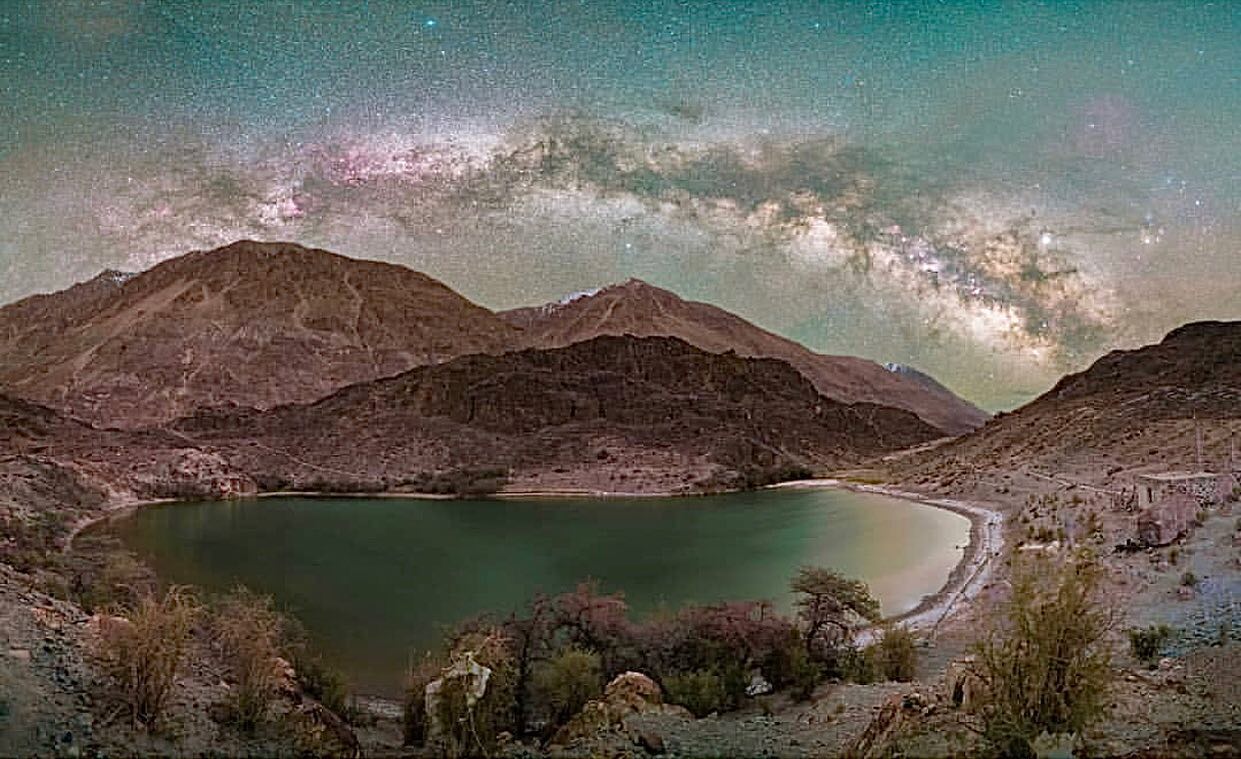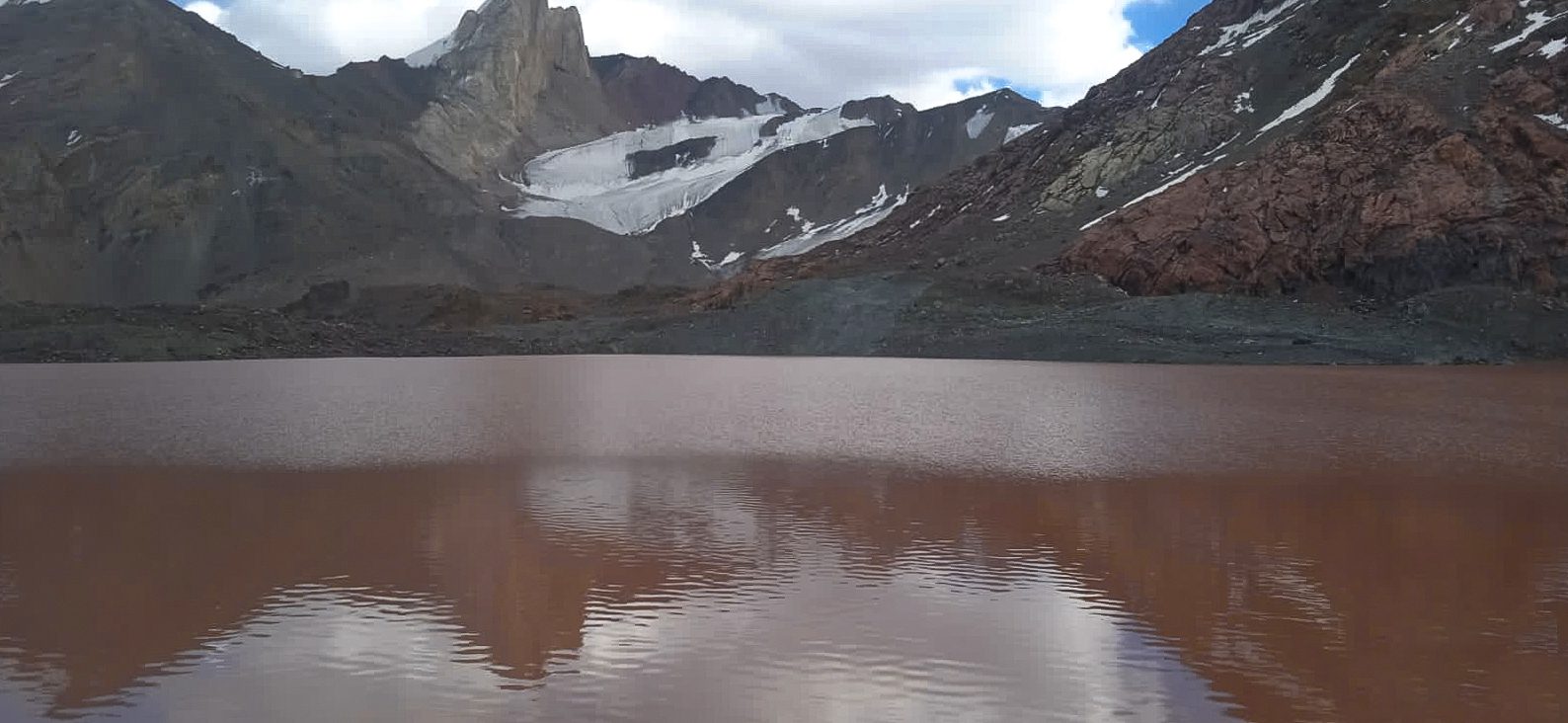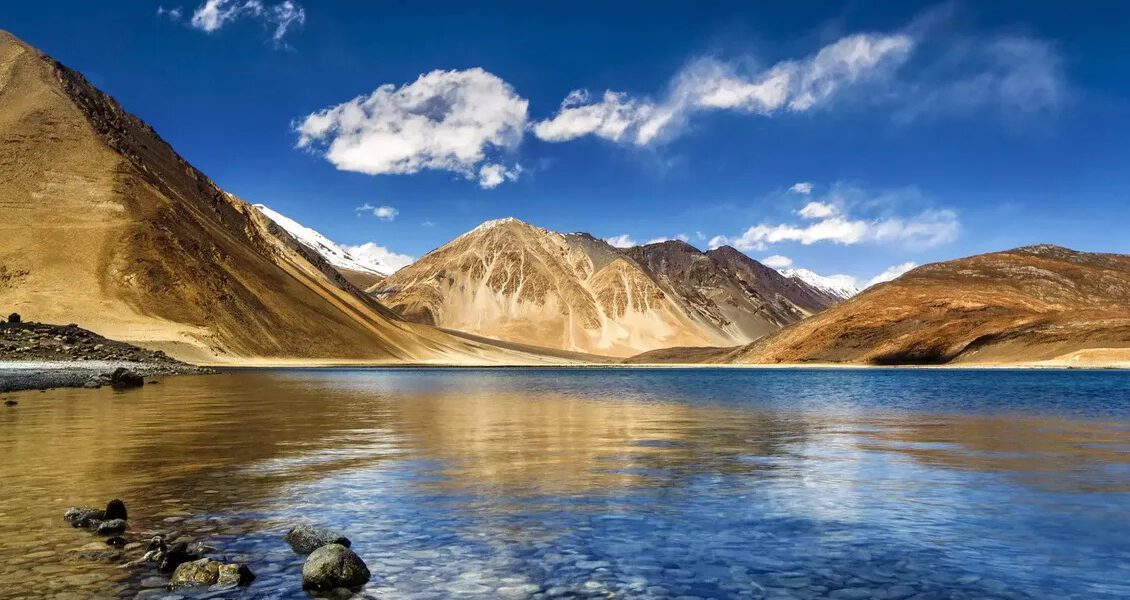Discover the pristine beauty of Ladakh hidden lakes and alpine meadows, where nature unveils a quiet, untouched waterworld. These high-altitude landscapes offer a breathtaking escape from bustling city life, with serene lakes, rich biodiversity, and majestic alpine meadows. Embark on this journey into Ladakh’s wilderness, exploring trails less traveled, capturing incredible vistas, and finding peace in the lap of nature.
Introduction to Ladakh’s Hidden Lakes and Alpine Meadows
Why Explore Ladakh’s Unseen Waterworld?
Nestled in the Himalayas, Ladakh’s hidden waterworld is one of the last frontiers of untouched nature. For those seeking solace and adventure, Ladakh’s pristine lakes and alpine meadows are a haven, offering panoramic views and incredible biodiversity that tell the story of a land preserved through centuries. With places like Yarab Tso and Mirpal Tso to explore, travelers can experience a blend of culture, spirituality, and nature. From photographers to trekkers, Ladakh’s alpine meadows and remote lakes offer an array of unique experiences.
Overview of Ladakh’s High-Altitude Lakes
Ladakh is famed for its high-altitude lakes, each with distinct beauty. Popular lakes like Pangong and Tso Moriri draw tourists every year, but the hidden lakes offer an experience like no other. These lesser-known treasures are glacial-fed and surrounded by verdant meadows, providing ideal spots for eco-friendly travel and an escape into Ladakh’s tranquil landscapes.

Discover Ladakh’s Hidden Lakes: An Off-the-Beaten-Path Adventure
Yarab Tso – Ladakh’s Sacred Hidden Lake
Yarab Tso is considered a spiritual place by locals and visitors alike. Tucked away near the village of Sumur, it requires a brief but invigorating hike. The water’s stillness mirrors the surrounding rugged cliffs, offering a serene environment that has earned it the title of Ladakh’s “hidden gem.”
“Visiting Yarab Tso was like stepping into a hidden paradise. The tranquility here is unparalleled, and the trek up is worth every step. It’s a must-see for anyone seeking serenity in Ladakh.”
— Julia Martinez, Photographer, Spain
Mirpal Tso – A Remote Gem in Ladakh
Located further off the main paths, Mirpal Tso is a true discovery for those willing to venture deeper. This lake is lesser-known but surrounded by stunning alpine meadows and frequented by rare wildlife. Ideal for camping and nature photography, Miru Tso’s reflective surface is often likened to a mirror, capturing the splendor of Ladakh’s high-altitude landscapes.

“Mirupal Tso was a beautiful surprise. We camped under the stars, and it felt like we had the whole lake to ourselves. There’s a silence here that’s hard to find anywhere else.”
— David Thompson, Travel Blogger, United Kingdom
Stat Tso and Lang Tso – Twin Lakes in the Rupshu Valley
Stat Tso and Lang Tso are twin lakes located in the Rupshu Valley. With strikingly clear water and dramatic surroundings, these lakes offer views that rival any Himalayan scenery. For adventure seekers, the area around the twin lakes is ideal for trekking, photography, and observing the unique wildlife of the region.

“Stat Tso and Lang Tso felt like a well-kept secret. I was taken aback by the untouched beauty and the calmness. It’s a perfect spot for anyone wanting a real off-the-grid experience.”
— Amanda Lee, Environmentalist, South Korea
The Scenic Alpine Meadows of Ladakh
Flora and Fauna of Ladakh’s Alpine Meadows
Ladakh’s alpine meadows are a sanctuary of biodiversity. These lush spaces bloom with seasonal flowers in summer, creating a striking contrast against the barren landscapes. Wildlife enthusiasts can expect sightings of rare bird species, marmots, and the occasional snow leopard.
Top High-Altitude Meadows in Ladakh for Nature Lovers
Popular meadows like the Zanskar Valley offer breathtaking scenery with vibrant wildflowers, seasonal lakes, and a backdrop of snow-capped mountains. The Tso Kar meadows are another scenic spot where migratory birds can be spotted, making it ideal for bird watchers and photographers.
| Meadow |
Unique Feature |
Best Time to Visit |
| Zanskar Valley |
Wildflower blooms and dramatic views |
May – September |
| Tso Kar Meadows |
Migratory birds and high-altitude flora |
June – August |
Best Treks Around Ladakh’s Alpine Meadows and Lakes
For those with a love for hiking, trekking around these lakes and meadows offers incredible views and a profound connection with nature. Beginner and moderate-level treks, such as the Nubra Valley Trek and routes near Tso Kar, lead through flowering alpine meadows and serene landscapes.

Planning Your Journey to Ladakh’s Hidden Lakes and Meadows
Best Time to Visit Ladakh’s Alpine Waterworld
To experience the best of Ladakh’s hidden lakes and meadows, visit between June and September, when the trails are accessible and the meadows are in full bloom. Winters are harsh and roads may be closed, so plan according to weather conditions.
Eco-Friendly Travel Tips for Ladakh’s Lakes and Meadows
– Respect local customs and avoid littering.
– Stay on marked paths to preserve the meadows.
– Choose eco-friendly accommodations and minimize waste.
– Use reusable water bottles and biodegradable products.
“Traveling to Ladakh’s lakes has taught me the importance of preserving these fragile landscapes. We carried our own waste out and avoided single-use plastics to keep these places pristine.”
— Sophie Laurent, Environmental Scientist, France
Recommended Travel Routes and Accessibility
Most lakes and meadows are accessible by road from Leh with some hiking required. Opt for routes via Sumur for Yarab Tso and Rupshu Valley for the twin lakes. For a smoother journey, consider hiring a local guide, who can also share fascinating insights into Ladakhi culture and traditions.

Experiences and Activities in Ladakh’s Hidden Waterworld
Camping by Ladakh’s Hidden Lakes
Camping near lakes likeMirpal Tso and Lang Tso offers an extraordinary night under Ladakh’s starry skies. Many travelers recount these moments as highlights, with crisp air, quiet nights, and breathtaking morning views.
Bird Watching and Wildlife Observation
Bird watchers can enjoy sightings of migratory birds near Tso Kar, while animal lovers might catch a glimpse of marmots or Himalayan ibex near the twin lakes. These areas are rich in wildlife and serve as key habitats for rare species.
“Bird watching in Ladakh’s meadows was an unforgettable experience. We saw black-necked cranes and many other species. It’s a paradise for nature lovers.”
— Ryan Andrews, Wildlife Photographer, Australia
Photography Hotspots in Ladakh’s Lake Regions
For photographers, early mornings and sunset provide the best lighting conditions to capture Ladakh’s lakes and meadows. Reflective lakes like Miru Tso and the vivid landscapes around Tso Kar are ideal for dramatic landscape photography.
Practical Information for Travelers to Ladakh
Essential Packing List for High-Altitude Adventure
| Item |
Description |
| Warm Layers |
Temperatures drop quickly, especially at night. |
| Trekking Boots |
Sturdy boots for rugged terrain and uneven trails. |
| Eco-Friendly Products |
Biodegradable soap, reusable bottles, and bags. |
| First Aid Kit |
Include altitude sickness meds and sunscreen. |
Important Tips for Acclimatization and Safety
As Ladakh’s altitude can cause altitude sickness, it’s crucial to acclimatize. Stay hydrated, ascend slowly, and listen to your body. Allow time for rest and take precautionary medications if needed.
Respecting Ladakh’s Local Culture and Traditions
Visitors should follow local customs, especially near sacred lakes like Yarab Tso. Respecting these customs is essential for preserving Ladakh’s cultural integrity and fostering a meaningful travel experience.
“Learning about Ladakh’s customs from our local guide was incredibly enriching. Respecting their way of life added depth to our journey.”
— Marissa Chen, Cultural Anthropologist, United States

Frequently Asked Questions (FAQs)
What are the most beautiful hidden lakes in Ladakh?
Some of Ladakh’s most beautiful hidden lakes include Yarab Tso, Mirpal Tso, and the twin lakes of Stat Tso and Lang Tso. Each offers a unique landscape and a serene atmosphere.
When is the best time to visit Ladakh’s lakes and meadows?
The best time to visit is between June and September, when the lakes are accessible and the meadows are in full bloom.
Are there beginner-friendly trekking routes to Ladakh’s hidden lakes?
Yes, there are several beginner-friendly routes, such as the Nubra Valley Trek and trails around Tso Kar, suitable for newcomers to Ladakh’s rugged terrain.
How can I ensure an eco-friendly visit to Ladakh?
Use reusable items, stick to marked paths, and dispose of waste properly to minimize environmental impact.
What wildlife might I see around Ladakh’s lakes?
You may encounter black-necked cranes, Himalayan marmots, and occasionally ibex or snow leopards around the lakes and meadows.
Conclusion: Embrace the Beauty of Ladakh’s Unseen Waterworld
Exploring Ladakh’s hidden lakes and alpine meadows is an experience unlike any other. These landscapes, untouched and tranquil, are a testament to the power and beauty of nature. By visiting respectfully, we help preserve this incredible environment for future generations, leaving only footprints and taking back memories of Ladakh’s hidden waterworld.
Ladakh hidden lakes
Ladakh hidden lakes | The journey through Ladakh mirrors the very essence of unraveling unknown horizons, as its dramatic landscapes and unique cultural identity awaken the deepest sense of wonder and exploration. Ladakh hidden lakes delves into this realm where inner peace intertwines with the wild, untouched beauty of Ladakh. From the snow-capped peaks to the serene monasteries, every step in Ladakh is a step toward self-discovery. The mountains, ancient paths, and unspoken mysteries stretch before travelers, offering a meditative experience where each encounter feels both effortless and transformative. Whether it’s trekking across remote valleys or sitting quietly beside a sacred lake, Ladakh invites those who seek a deeper connection to the natural and spiritual world.

Ladakh hidden lakes
The monasteries of Ladakh stand as living monuments to the region’s profound spiritual heritage. With origins dating back over a thousand years, these ancient structures are both places of worship and repositories of art, culture, and wisdom. Hemis Monastery, one of the largest in Ladakh, is renowned for its annual festival, featuring colorful mask dances performed by monks. The history of these monasteries reflects Ladakh’s role as a crossroads between India, Tibet, and Central Asia, where religious and cultural influences have intertwined over the centuries.
The Tibetan Buddhist influence is especially evident in the architecture and daily life of the monks. Prayer wheels, intricate murals, and the soft hum of chants fill the air as visitors explore the monastery grounds. Each monastery, from the remote Lamayuru to the awe-inspiring Thiksey, offers a window into the spiritual heart of Ladakh. These centers of meditation, learning, and community life continue to thrive, preserving traditions that have shaped Ladakh for generations.
Why Visit Ladakh for Ladakh hidden lakes?
Ladakh is a destination that transcends mere travel. It offers a journey that touches both the outer and inner landscapes, making it a perfect setting for those who seek to unravel their own unknown horizons. The region’s breathtaking scenery—from towering mountain ranges to hidden valleys—provides not just an escape but a space for contemplation and growth. Ladakh’s culture, deeply rooted in Buddhist practices, invites visitors to reflect on their own lives and the world around them.
Ladakh’s people, known for their warmth and hospitality, add to the richness of the experience. Villages like Sumda Chun and the legendary Nubra Valley introduce travelers to a way of life that is intricately connected to nature and spirituality. Staying in local homestays allows for immersive experiences where one can learn about traditional Ladakhi customs, share meals made from local produce, and participate in community rituals.

Beyond its natural beauty, Ladakh offers a unique opportunity to explore oneself. The vastness of the region’s plateaus and the clarity of its skies seem to mirror the vastness of the human spirit. Whether it’s standing atop a mountain pass at 18,000 feet or meditating in a centuries-old monastery, Ladakh helps unravel the unknown horizons within each traveler.
Finding the Best Ladakh hidden lakes in Ladakh
Finding the best places in Ladakh to experience “Ladakh hidden lakes” involves venturing off the beaten path. Ladakh’s lesser-known treks, such as those leading to secluded monasteries or high-altitude lakes, offer unparalleled opportunities for solitude and reflection. The Markha Valley trek, for instance, takes travelers through verdant valleys, ancient villages, and high-altitude passes, allowing for both physical and spiritual exploration.
Ladakh’s iconic lakes, including Pangong Tso and Tso Moriri, are ideal spots for quiet contemplation. Their still waters reflect the sky, creating a mesmerizing landscape that feels timeless and infinite. Sitting beside these lakes, especially at dawn or dusk, brings an overwhelming sense of peace and connection with nature.

For those interested in Ladakh’s spiritual heritage, exploring monasteries such as Alchi, Phyang, or Diskit can be a transformative experience. These sites are not just places of worship but also centers of art, philosophy, and wisdom. Visiting these monasteries, with their ancient murals and intricate statues, offers insight into Ladakh’s rich cultural tapestry.
Ladakh’s Atmosphere and Ladakh hidden lakes
Ladakh’s atmosphere is unlike any other place on Earth. The stark contrasts between the rugged mountains and the serene, tranquil monasteries create an environment that feels both raw and sacred. The traditional decor in Ladakhi homes and religious sites reflects this balance, with mud-brick houses adorned with prayer flags and colorful thangkas (Buddhist paintings) that add warmth and spiritual meaning to the space.

The interiors of Ladakhi homes, often simple and functional, are filled with symbols of devotion. Small shrines dedicated to Buddhist deities are common, and the air is often fragrant with incense. The use of earthy materials, like stone and wood, along with brightly colored textiles, creates an inviting and peaceful space, perfect for relaxation and reflection.
Traditional Ladakhi Cuisine
Traditional Ladakhi cuisine is an integral part of the region’s identity, offering a unique blend of flavors that reflect its harsh climate and remote location. Hearty, warming dishes such as thukpa (noodle soup) and momos (dumplings) provide the sustenance needed to endure Ladakh’s cold temperatures. Skyu, a thick stew made with root vegetables and barley, is another staple of the Ladakhi diet, designed to nourish both body and spirit.

Drinks like butter tea, made with yak butter and salt, are a must-try for anyone visiting Ladakh. This rich, savory drink is not only warming but also hydrating, making it essential for those venturing into the high-altitude regions of Ladakh. Chang, a local barley beer, is often enjoyed during festivals and community gatherings, adding a sense of joy and camaraderie to any occasion.
Live Cultural Ladakh hidden lakes in Ladakh
Ladakh is home to a vibrant cultural scene, with festivals and live performances held throughout the year. The Hemis Festival, which celebrates the birth of Guru Padmasambhava, is one of the largest and most famous events in the region. Monks dressed in elaborate costumes perform cham dances, which depict the triumph of good over evil. The energy of the festival, with its bright colors, rhythmic music, and elaborate rituals, draws visitors from around the world.
Other local festivals, such as the Losar (New Year) and Ladakh Festival, provide visitors with the chance to witness traditional dance, music, and crafts that have been passed down through generations. These events are more than just entertainment; they are a celebration of Ladakh’s rich cultural heritage and its deep connection to the spiritual world.
Trekking and Outdoor Activities Ladakh hidden lakes
Ladakh is a trekker’s paradise, offering some of the most stunning and challenging routes in the world. From the famous Ladakh hidden lakes, which follows the frozen Zanskar River, to lesser-known routes like the Sham Valley or Nubra Valley treks, Ladakh’s landscape offers endless possibilities for adventure and discovery. The high-altitude passes, such as Khardung La and Chang La, offer breathtaking views of snow-capped peaks and sprawling valleys.

Wildlife enthusiasts will also find Ladakh hidden lakes to be a haven for rare species such as the snow leopard, Himalayan blue sheep, and the Tibetan wild ass. Winter expeditions to spot the elusive snow leopard in the Hemis National Park are gaining popularity among wildlife photographers and conservationists alike.
The Importance of Preserving Ladakh’s Ladakh hidden lakes
Ladakh’s rich cultural and environmental Ladakh hidden lakes is under increasing threat from climate change and mass tourism. Preserving this unique region requires careful attention to sustainable tourism practices. Choosing eco-friendly accommodations, supporting local businesses, and participating in community-led conservation efforts are just a few ways that visitors can contribute to the preservation of Ladakh’s natural and cultural heritage.
Ladakh’s people have a long history of living in harmony with their environment, practicing sustainable agriculture, and maintaining a deep spiritual connection to the land. Visitors are encouraged to follow the same principles, leaving no trace and respecting the fragile ecosystems that make Ladakh so special.
Etiquette and Tips for Visiting Ladakh hidden lakes
Before visiting Ladakh, it’s essential to understand and respect the region’s customs and traditions. As a deeply spiritual place, Ladakh requires visitors to dress modestly, especially when visiting monasteries or attending religious ceremonies. Always ask for permission before taking photographs inside monasteries or of local people.
Medical Ladakh hidden lakes
Spa trail Ladakh hidden lakes
Ladakh hidden lakes

When Ladakh hidden lakes, remember to stay on designated paths to avoid damaging fragile ecosystems. Tipping is appreciated but not expected in most settings, and it’s important to carry cash, as many remote areas do not accept credit cards. Lastly, be mindful of altitude sickness and take the necessary precautions when traveling to higher elevations.
Conclusion: Enjoying Ladakh hidden lakes in Ladakh
Ladakh is a place where the physical and spiritual worlds converge, offering travelers a journey unlike any other. Whether you’re trekking across high-altitude deserts, exploring ancient monasteries, or simply sitting in quiet reflection by a mountain lake, Ladakh invites you to unravel your own unknown horizons. By respecting the region’s traditions and practicing sustainable tourism, you help ensure that Ladakh’s beauty and cultural richness will be preserved for future generations to explore and enjoy.
